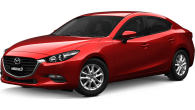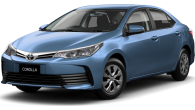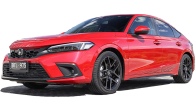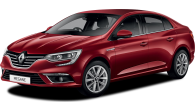I've probably said this before, but it bears repeating: I never thought in my wildest dreams I'd be regarding the launch of a new sedan variant almost as a curiosity.
I'm old enough to remember that we had all kinds of cars - Falcon and Commodore. And then daylight. We drove sedans and if we needed a bit more space, we'd buy a wagon (these are definitely a curiosity).
Four-wheel drives were for weirdos with big beards and Akubras or rich retirees with delusions of grandeur.
And yet, here we are. The i30 Sedan we already know because we've driven a few of them since the local launch of the new generation of what we used to call Elantra.
Rolling on a whole different platform to the i30 hatch, it made sense to tie them together to improve the sales figures in the same way all Corollas and Mazda3s are called the same thing whether hatch or sedan.
A couple of interesting ideas have bubbled up at Hyundai HQ - one is that people are after a bit more performance in their small sedans in much the same way they like it in their hatches.
Hyundai is also running with the theory that if presented with a compelling proposition that isn't an SUV, younger buyers might be attracted to a funky, sporty sedan.
So the Korean company has taken the hugely successful 'N' brand from the bolt-from-the-blue i30 N and created this halfway-house N-Line, a kind of gateway performance tier akin to BMW's 'M Performance' brand. The result, is the i30 Sedan N-Line.
Hyundai I30 2021: N Line
| Engine Type | Turbo 4, 1.6L |
|---|---|
| Fuel Type | Unleaded Petrol |
| Fuel Efficiency | 6.8L/100km (combined) |
| Seating | 5 |
| Price From | $26,070 - $32,120 |
Does it represent good value for the price? What features does it come with?
7 / 10
There are two trim levels, two transmission and one engine in the i30 N-Line sedan. The entry level car - known as i30 Sedan N-Line - is available with a six-speed manual for $30,290 or a seven-speed 'DCT' (dual-clutch) for $32,290.
The the DCT-only Premium adds some spec taking the price to $37,290, with all prices offered before on-road costs.
In the entry-level car you get 18-inch wheels with sportier Goodyear rubber, an 8.0-inch touchscreen, dual-zone climate control, wireless phone charging, synthetic leather trim, sports seats, leather N wheel and shifter, auto LED headlights, auto wipers, keyless entry and start, rear parking sensors, reversing camera and a space saver spare.
.jpg)
The step up to the Premium adds a sunroof, digital radio, Bose-branded speakers, front parking sensors, solar control glass, the bigger 10.25-inch media touchscreen, sat nav, heated and ventilated front seats, and a 10.25-inch digital instrument pack.
The comparatively disappointing 8.0-inch touchscreen in the base car runs an older version of Hyundai's media software but it does have Apple CarPlay and Android Auto.
.jpg)
In the Premium you get the butt-kicking new software on the big, inviting 10.25-inch screen along with the sat nav and all the functionality you could wish for. Including soundscapes that include a busy cafe, something that never fails to amuse me.
Is there anything interesting about its design?
8 / 10
The i30 Sedan is pretty wild to start with. If you've never heard the name Luc Donckerwolke, check out his work at Lamborghini (he's now in the Hyundai Motor Group) and you'll recognise some of his influence over the design of the car, particularly the creased, slashed metalwork in the doors.
It's a proper piece of art and it's clear the N-Line was part of the deal from day one, with lots of black gloss in the grille, front bumpers, side skirts, rear lip spoiler and rear diffuser.
.jpg)
I'm a fan, and the N-Line additions make me more of a fan. It's distinctive in the way early 'flame-surfaced' BMWs were.
The cabin is also distinguished from the i30 hatch with a Lexus-ey wraparound cockpit with integrated grab-handle for the passenger.
.jpg)
It's better resolved in the Premium with the larger screen real estate (rather than an attempt to hide the lack of screen size on the entry-level).
The N-Line has the requisite red stitching, the far better looking N steering wheel, cooler-looking seats and N logos in various places. The materials are mostly good with the occasional narky bit of plastic that isn't as good as the rest.
How practical is the space inside?
7 / 10
Things are slightly different between the versions. The entry-level has two different-sized cupholders up front while the Premium has that clever system where you pluck out the base of the cupholders, turn them 180-degrees and replace them for a shallower (or deeper) set to cater for different cup sizes, specifically depth.
.jpg)
The front door pockets have bottle holders but they're not particularly usable, making up the numbers rather than actually carrying anything larger than a very small bottle.
The rear doors' storage spaces are a bit more bottle-holdery but less pockety.
.jpg)
Unusually in this segment, there are air-conditioning vents in the back to go with the generous legroom and reasonable if not excessive headroom.
The boot holds 474 litres (VDA), which is around 80 more than the hatch and the seats fold 60/40. Put both down and you have 1350 litres.
What are the key stats for the engine and transmission?
7 / 10
The N-Line's 1.6-litre turbo four is a very familiar engine across various Hyundais. Here in the i30 it spins up 150kW at 6000rpm and 265Nm between 1500 and 4500rpm.
The base level is available with a six-speed manual or the seven-speed dual-clutch. Before you get too excited, it's not related to the eight-speed dual-clutch in the forthcoming i30 N update, but the older dry clutch transmission.
.jpg)
As with every i30, the sedan is front-wheel drive and the extra oomph from the turbo means you'll see 100km/h in 7.9 seconds in the manual and 7.6 seconds in the DCT.
How much fuel does it consume?
8 / 10
As this was a launch, the (dash-indicated) fuel figure I averaged over 200-odd kilometres of 8.8L/100km wasn't bad.
The drive included some motorway, some heavily-trafficked roads and plenty of demanding corners climbing up and down mountains and valleys.
It lined up favourably with the official combined cycle figure of 7.3L/100km. Hyundai figures tend to be a bit more realistic than many other brands.
With a smallish 47 litre tank, that's a real world (with a heavy foot) range of just over 530km.
Warranty & Safety Rating
What safety equipment is fitted? What safety rating?
7 / 10
The i30 sedan has six airbags, ABS, stability and traction controls, forward AEB (high and low speed), with pedestrian and cyclist detection to 85km/h, lane keep and lane following assist, blind spot collision avoidance, and reverse cross-traffic alert.
Manual cars have a slightly different spec, with blind-spot collision avoidance replaced with plain old monitoring and the reverse AEB is MIA.
There are two ISOFIX points and three top-tether anchors across the back row for baby capsules/child seats.
The i30 sedan does not yet have an ANCAP safety rating.
What does it cost to own? What warranty is offered?
7 / 10
Hyundai offers a five year/unlimited kilometre warranty with a year of roadsisde assist.
The turbo engine in the N-Line means you have to return to the dealer every 12 months or 10,000km and you'll pay no more than $299 each for the first five services.
The price for each service matches the non-turbo cars but servicing is every 15,000km for them. On the plus side, each service extends your roadside assist by 12 months.
What's it like to drive?
7 / 10
The other half of the N-Line equation is the locally-tuned sport suspension along with slightly bigger brakes. A new set of springs, anti-roll bars and dampers along with the multi-link rear suspension make for a tauter, more engaging drive.
The steering seems a little heavier, which could just be the bigger wheel and tyre package. But it's a bit more positive, if still a little lacking in overall feel.
The ride, however, is excellent, especially considering it's a lot more fun. I spent a total of 400km in the car and it was always comfortable, whether it was on the freeway or loaded up in corners.
.jpg)
You can't say the same thing about the i30 hatch, which can get a bit harsh and crashy on poor surfaces.
What I wasn't sure about was how loud the tyres were on some surfaces, particularly my perennial target of hate, Sydney's horrifically-surfaced M4 motorway. It would get a little tiring on longer trips.
For the few people who are serious about buying the manual, it seems like Hyundai has learnt from the i30 N's lovely, slick gearbox.
The last manual Hyundai I drove with this engine was pretty ordinary, with an almost obstructive shift and a clutch that seemed to damp down engagement. Which meant slow shifts and not much sport in the sporty intent.
.jpg)
This one is much more interested in working with you and seems to suit the engine better.
And by better, I mean I would personally prefer it over the DCT. There's nothing wrong with it per se. The shift quality is good in normal driving but it isn't really set up for serious driving.
But then again, this isn't the full-fat N, so most folks will be perfectly happy with it, which is nice because it's unlikely the manual will stick around for long because hardly anyone will buy it.
Verdict
As practical funsters go, the i30 Sedan N-Line is a mighty fine addition. Hyundai knows selling sedans to an SUV-obsessed market is hard and private buyers is where the i30 Sedan is squarely aimed, much like its forthcoming big sibling, the Sonata N-Line. The company knows is placing an each way bet on every customer coming through the door and that's a good idea - SUVs have become a default choice and if a paying punter is wavering, the dealer can point at a sporty small sedan with tons of room, tidy handling and grab-you-by-the-neck looks.
To pick the best out of them is tricky. The top-spec Premium is $5000 more than the base DCT but doesn't have an obvious or compelling specification to tempt you. On the other hand, the base model cabin is slightly let down by the goofy-looking 8.0-inch screen. On balance, I'd probably go for the base model and live with the screen while enjoying what this car is made for - driving. I might even pick the manual.
I talk to a lot of people who have glumly accepted that the family car has to be an SUV. Hyundai is banking on some younger buyers thinking the i30 Sedan N-Line is a cooler alternative. It's so crazy, it just might work.
Pricing Guides







.jpg)
.jpg)
.jpg)
.jpg)
.jpg)

.jpg)












.jpg)
.jpg)




